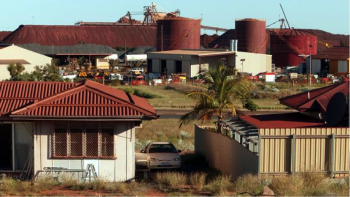
Do Property Prices Ever Fall?
It was December 14, 2011. The Australian Resource Boom was in full swing and the Pilbara was ground zero. In Port Hedland the median house price had almost doubled in four years from $600,000 in 2007 to more than $1 million, according to Real Estate Institute of WA figures. In Wedge Street, you needed plenty of ‘wedge’ – $995,000 to be exact – to buy a brand new ‘off the plan’ two-bedroom unit in a multilevel apartment complex.
Helped by company subsidies, Fly-In-Fly-Out (FIFO) workers pushed rents in Port Hedland to absurd levels and vacancies to zero. According to reports at the time, a three-bedroom unit on Kingsmill Street, with admittedly stunning ocean views, was listed for $3200 per week. To give you some perspective, a three-bedroom unit in Sydney’s exclusive Piper Point was listed at the same time for $1500 per week.
The WA Times, perhaps justifying the ridiculous prices, wrote at the time: “the inevitable end of the Pilbara boom has been predicted as early as one decade away, but may also be more than 60 years away.” The statement offered some insight into the bullish expectations built into property prices then. The WA Times added; “What happens when the FIFO workplace diminishes, leaving smaller operational teams behind is not yet known.”
Meanwhile a house in Moore Street, sold for $1,485,000 having last sold for $285,000 in 2005, and $152,000 in 1997. In McPherson Street, a four bedroom home sold for $1,200,000 having previously traded for $448,000 in 2005, and for $160,000 in 2000.
But back in 2011 real estate agents were described as being “torn over what will happen when the current fly-in, fly-out workforce diminishes.”
Basic economics tells you that if thousands of people flood a town and push real estate and rental prices up, there can be no mystery about what will happen when those same thousands of people leave said town. I have personally witnessed the same elsewhere in Australia. In some towns in the south east of Australia, for example, prices have fallen 50 per cent and remain depressed.
Port Hedland real estate agents and residents however did not have to wait 60 years (or even “one decade”) to find out “what happens” when the mining boom ends.
According to the ABC this week; “A house in the mining town of Port Hedland has been passed in at auction for $360,000 after it was bought four years ago for $1.3 million. The three-bedroom, one-bathroom fibro and iron house was built in the Western Australian town in the 1960s.”
Our favourite part of the ABC’s article however was the continued optimism of one real estate agent in Port Hedland; The ABC reports “Real estate agent Barry Walsh said it [the lack of interest of any buyer at $360,000] was a sign the mining boom’s construction phase, which drove property prices to unrealistic levels, had tapered off.”
A $1 million drop in the price of a $1.3 million house doesn’t sound like a “tapering off” to us, but we’ll let you be the judge.
Bigger cities like Sydney rely on the prosperity of more than one industry and its immigrating workforce to drive house prices. But nowhere in the world are houses in big cities or small towns immune to declines.
Roger Montgomery is the founder and Chief Investment Officer of Montgomery Investment Management. To invest with Montgomery, find out more.
Aaron Killeen
:
Roger,
I imagine negative equity would be bad, we have been lucky enough to have housing supplied for 7 years, some friends though not so lucky!
I agree with your last comment and personally that is a major worry!
Roger Montgomery
:
Thanks Aaron
Aaron Killeen
:
This is also the same result where we live in Karratha. 3×1 brick needing TLC advertised for $330,000. A lot of people hurting…
Roger Montgomery
:
That sounds terrible. I imagine negative equity will be very painful. Hearing Ian Narev from CBA say: “The Australian economy has many of the foundations necessary to make a successful transition from its dependence on resource investment,” and “Population growth, a vibrant construction sector, some signs of increased business investment, greater trade access supported by a lower Australian dollar and a strong banking sector are all contributing to an economy that remains the envy of most developed markets.”, you’d think he was not living in the same country has many Australian who are suffering. But the CBA’s CEO then added: “weak confidence is a significant economic threat,” Narev went on to note that businesses need certainty to enable them to invest and create jobs – while households are in need of a “greater feeling of security”.
Wayne A
:
‘Earning’ about 22k every day means that Mr Narev is by no means “living in the same country as many Australians who are suffering”. Indeed, if you consider the influence of the banks on lofty house prices in this country, those Australians’ loss is often his gain.